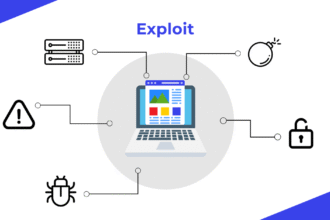Small and midsize businesses (SMBs) are increasingly targeted by cybercriminals, yet most lack the resources or strategic approach necessary to defend against cyber threats. This paper outlines a comprehensive framework for SMB cybersecurity, focusing on actionable practices, legal compliance, and practical tools for improving cyber resilience.
The cybersecurity landscape has shifted. Once assumed to be a problem exclusive to large “deep pocketed” enterprises, data breaches and ransomware attacks now pose an existential threat to SMBs. According to recent studies, 43% of cyberattacks are directed at SMBs, while 60% of affected businesses close within six months of a successful breach. Despite this, fewer than one in five SMBs report being prepared to handle a significant cybersecurity incident.
This guide presents a practical, modular framework for SMBs seeking to build a defensible cybersecurity posture with limited resources.
The Strategic Importance of Cybersecurity for SMBs
Cybersecurity is no longer merely an IT concern—it is a business survival issue. A single breach can compromise sensitive customer data, disrupt operations, trigger regulatory penalties, and irreparably harm an organization’s reputation.
Core Pillars of SMB Cybersecurity
- Asset Inventory. An organization must begin by understanding its digital footprint. Maintaining an up-to-date inventory of hardware, software, accounts, and data assets is a prerequisite for effective security.
Recommended Practice:
- Document all laptops, servers, mobile devices, and cloud platforms
- Map sensitive data flows (like Payroll, CRM, ESS, HRIS)
- Maintain visibility into who has access to what
{see our review of Spiceworks Inventory here}
- Access Control. Controlling who can access systems and data is a fundamental defense against unauthorized activity. Password reuse and shared credentials remain common vulnerabilities.
Recommended Practices:
- Require unique, complex passwords for all accounts.
- Enforce the use of password managers (e.g., Bitwarden, 1Password).
- Enable multi-factor authentication (MFA) across all major systems.
- Create separate accounts for each user with appropriate permissions.
- Data Backup and Recovery. A robust backup system is a critical safeguard against ransomware and accidental data loss.
Recommended Practices:
- Perform automated, daily backups of mission-critical data.
- Retain both cloud-based and offline (air-gapped) backup copies.
- Test recovery procedures quarterly to ensure data integrity.
{Suggested Tools: Acronis, iDrive, Backblaze}
- Security Awareness and Training. Human error remains the leading cause of data breaches. An informed workforce reduces risk significantly.
Recommended Practices:
- Provide quarterly cybersecurity training to all employees.
- Emphasize phishing awareness, email hygiene, and safe web practices.
- Run simulated phishing tests to measure employee readiness.
- Endpoint Protection. All devices used to access company systems must be secured and monitored for malicious activity.
Recommended Practices:
- Deploy antivirus and anti-malware software on all endpoints.
- Keep operating systems and applications up to date.
- Consider endpoint detection and response (EDR) for enhanced visibility.
- Cyber Insurance. While insurance does not prevent cyber incidents, it provides critical financial coverage and access to incident response experts.
Coverage May Include:
- Data breach response costs
- Ransomware negotiations and payments
- Legal and regulatory reimbursement
- Business interruption compensation
- Legal and Regulatory Compliance. Many SMBs are unaware they are subject to federal and state cybersecurity regulations. Non-compliance can result in significant penalties and liability.
Key Regulatory Frameworks:
- FTC Safeguards Rule: Applies to financial institutions and service providers.
- HIPAA: Governs health data privacy and security.
- CMMC/NIST 800-171: Applies to government contractors.
- State breach notification laws: Mandate reporting of personal data breaches.
Minimum Documentation:
- Written Information Security Program (WISP)
- Incident Response Plan (IRP)
- Acceptable Use Policy (AUP)
A Case Study Hypothetical: Ransomware Incident at a Small Service Business.
Joe’s HVAC Co., a 17-employee service business based in Ohio, experienced a ransomware attack after an office manager unknowingly opened a fraudulent invoice email late on a Friday afternoon. By the following Monday, all company files—including critical data such as schedules, payroll records, and tax documents—had been encrypted and held for ransom. Without backups or an incident response plan in place, the company was forced to pay $22,000 in Bitcoin to regain access to its systems.
The total response costs quickly escalated: $11,000 for emergency IT support and another $8,000 for legal counsel and breach notification compliance. In addition to these expenses, the company suffered undisclosed revenue losses and damage to client relationships. The breach was largely preventable; the root causes included the absence of multi-factor authentication (MFA), lack of data backups, use of shared user accounts, and no formalized cybersecurity protocols. This incident highlights the urgent need for even small, local businesses to adopt basic cyber hygiene and develop a clear incident response strategy.









One Comment
Great Article JT!